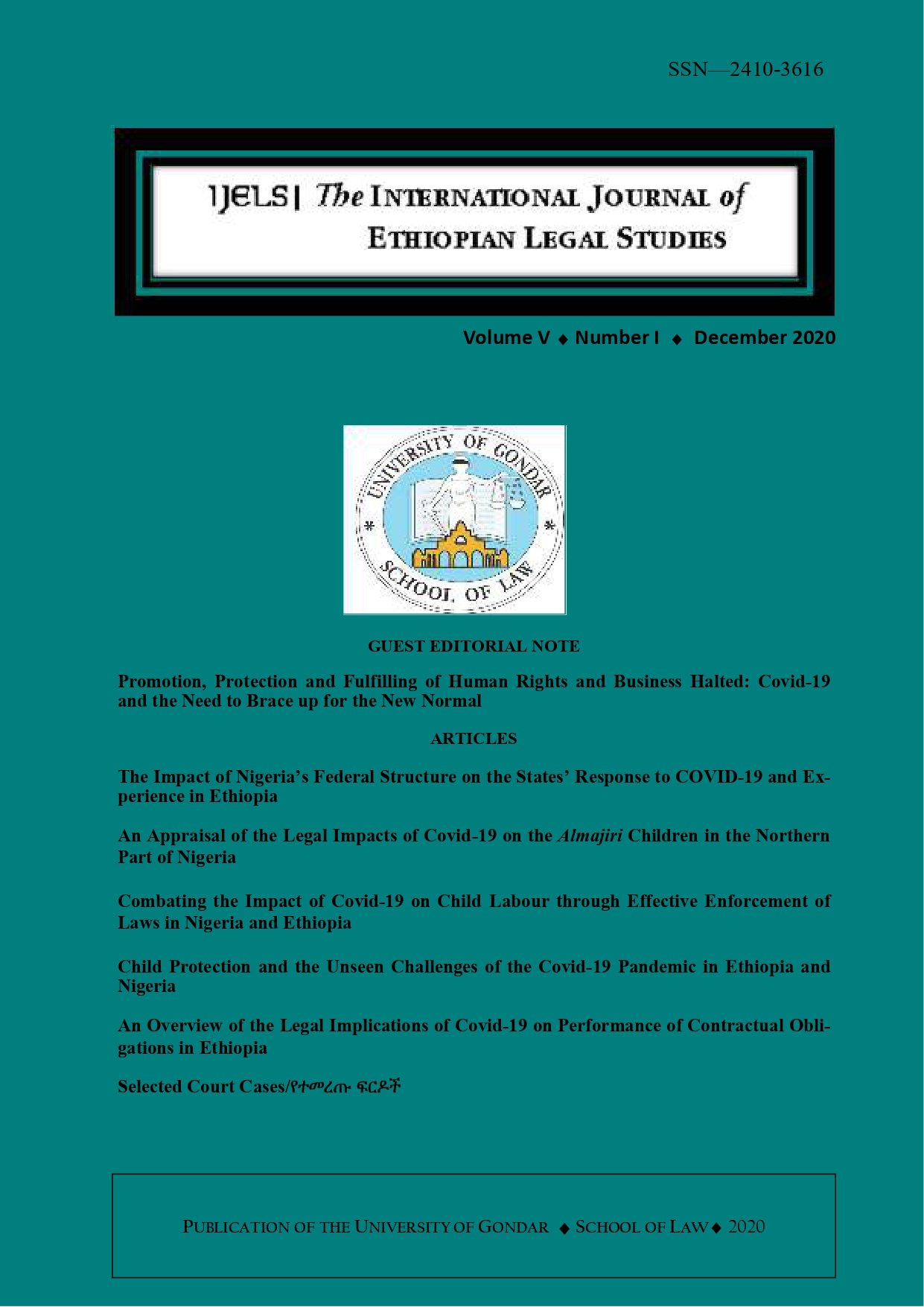CHILD PROTECTION AND THE UNSEEN CHALLENGES OF THE COVID-19 PANDEMIC IN ETHIOPIA AND NIGERIA
Abstract
Child protection concerns the prevention and response to the three most egregious harms facing children - abuse, exploitation, and violence. This article highlights challenges that affect child protection within the realities of the COVID-19 control measures and thereafter gives content to the usefulness and need for multisectoral collaboration in the implementation of children’s rights as part of the broader response to the COVID-19 challenges. Efforts to contain the COVID-19 pandemic are necessary for the health of the world’s population. However, these efforts, as identified, are exposing vulnerable groups and especially children in Nigeria and Ethiopia to increased risk of maltreatment, violence, sexual abuse, and exploitation. School closures, movement restrictions, overcrowded spaces at home, loss of jobs by parents, isolation, all increase the possibility that children are experiencing physical, psychological, and sexual abuseespecially children already living in urban slums, violent homes, as well as unhealthy and unstable families. For many children in Nigeria and Ethiopia, growing economic vulnerabilities
will intensify the likelihood of child labour, child marriage, and child trafficking. It is argued that despite having enabling laws, Nigeria and Ethiopia have not been decisive about fulfilling their normative obligations. Normatively, it is the central role of governments to see that promises made to children under the United Nations Convention on the Rights of the Child (UNCRC) African Charter on the Rights and Welfare of the Child (ACRWC), and indeed other human rights treaties and national legislation on children are kept. The methodology used in this article is of a
qualitative nature that conceptualises child protection as a progressive protective environment involving multidisciplinary components that are interconnected in the sense that child protection is not only descriptive but also normative and prescriptive.
Downloads
Published
Issue
Section
License
Copyright (c) 2020 Ngozi Chuma Umeh

This work is licensed under a Creative Commons Attribution-NonCommercial-NoDerivatives 4.0 International License.

